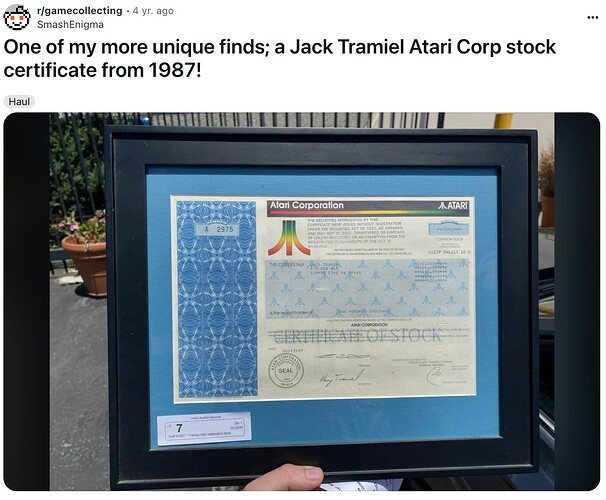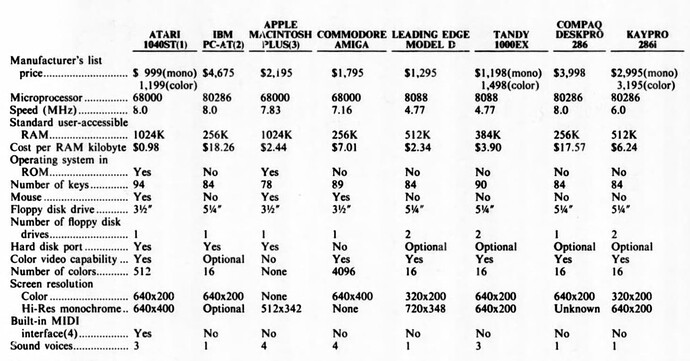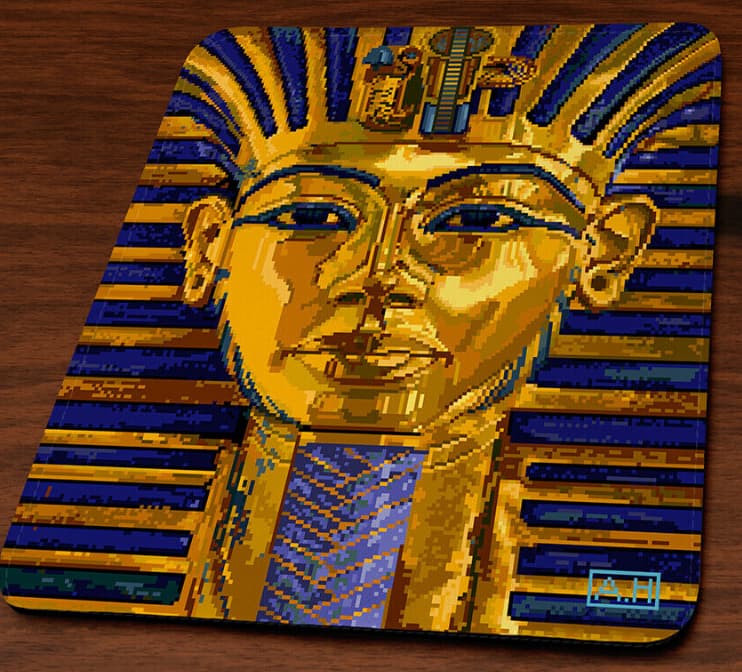The Atari ST range were, apparently, the big thing in 1985 and 1986, and Atari - the bit of it run by Jack Tramiel - raised funds from the stock market on the prospects.
Here’s Jack T’s share cert, worth $40 now but showing asset value of a million at the time:
The filings describe the ST as a fast computer and the only one with a megabyte for less than a kilobuck:
The Company’s business strategy is to offer in the ST series advanced microcomputer memory capacity and processing speed technology and to price the ST series as an industry leader based on price-to-memory capacity and price-to-processing speed. The Company believes the 1040ST to be the first microcomputer offering more than one million bytes of internal memory (as much as the Apple Macintosh Plus and more than the standard IBM PC-AT and Commodore Amiga) at a manufacturer’s list price of less than $1,000. The Company’s ST computers also feature color and high resolution graphics; easy-to-use operating features; and processing speed equalling or exceeding that of any standard 16/32-bit configuration IBM, or any Apple or Commodore microcomputer, as well as those of the Company’s other principal competitors, at lower suggested retail prices than these competing products, comparably equipped.
Some several hundred pages of info about Atari’s IPO posted to the Internet Archive by Kay Savetz:
I am positive there are many amazing, unknown facts about the company’s history in these pages — now, let’s find them.
(This being the reincarnated and subdivided Atari, split by Warner Comms into arcade and computer businesses, the computer part sold to Tramiel for $240 million of promises, and temporarily funded by Warner… who got paid $36 million out of the funds raised at IPO, as well as getting 7 million shares.)
Here’s the NYT on the IPO:
The Atari Corporation, based in Sunnyvale, Calif., made its initial public offering of 4.5 million shares, or 16 percent of the company.
While the shares opened at $11.50, which was at the low end of the range specified in Atari’s prospectus, they moved up to $12.50 by the close of trading today on the American Stock Exchange. Atari’s prospectus indicated it had net income of $12.4 million in the first half of 1986 on sales of $105.6 million. It lost about $26.7 million in 1985.
Here’s the competitive landscape according to Atari’s filings:


